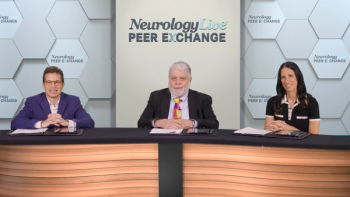According to a recent announcement, the FDA has allowed an expanded access (EA) program assessing intranasal foralumab (Tiziana Life Sciences) non-active secondary progressive multiple sclerosis (na-SPMS) to increase from 10 patients to a total of 30 patients.1 The available data from the currently enrolled patients are the first to combine PET imaging with a novel ligand, immune-biomarkers, clinical measures and comprehensive safety data end points in patients treated with long-term intranasal foralumab.
As of April 2024, 2 of the 10 participating patients were dosed for more than 1 year and 8 additional patients were dosed for 6 months, all with no reports of serious adverse effects. All participants were either stabilized or displayed improvement on foralumab, and none declined in key clinical measures. Investigators noted that 70% of these participants did not report any measurable improvement in fatigue while on treatment with foralumab.
According to the announcement, patients with na-SPMS who were not eligible for the phase 2a trial (NCT06292923), initiated in November 2023, may now be considered for this expanded access program. The treatment, administered intranasally, is designed to bind to T cell receptor and dampens inflammation by modulating T cell function, thereby suppressing effector features in multiple immune cell subsets.
Top Clinical Takeaways
- The FDA's decision to expand access to intranasal foralumab showcases a potential avenue for treating patients with na-SPMS beyond clinical trials.
- Initial results suggest promising outcomes with no serious adverse effects observed in patients treated with foralumab.
- Combining PET imaging, immune-biomarkers, and clinical measures offers a comprehensive approach to assessing the efficacy and safety of novel treatments like intranasal foralumab for na-SPMS.
“Tiziana is glad to provide patients with na-SPMS who do not qualify to be enrolled on our phase 2 trial the possibility to receive open-label treatment with our intranasal fully human anti-CD3 monoclonal-antibody, foralumab. As there are no FDA approved treatments for na-SPMS, an EA program gives these patients access to this novel drug,” Gabriele Cerrone, chairman, acting CEO and founder of Tiziana Life Sciences, said in a statement.1
In September 2023, the agency released a guidance entitled “Guidance on Substantial and Confirmatory Evidence of Efficacy and Safety” addressing the use of EA programs to be considered as part of confirmatory evidence. According to the guidance, the FDA noted that “Expanded access refers to the use of an investigational drug when the primary purpose is to diagnose, monitor, or treat a patient’s disease or condition rather than to obtain the kind of information about the drug that is generally derived from clinical trials.”2
“I am grateful to be allowed to dose 20 additional patients that do not meet the inclusion criteria for the ongoing intranasal foralumab phase 2a, randomized, double-blind placebo-controlled, multicenter dose-ranging study multiple sclerosis trial potential access to this treatment,” Tanuja Chitnis, MD, professor of neurology at Harvard Medical School and senior neurologist at Brigham and Women’s Hospital, said in a statement.1 “The EA program has allowed us to obtain important information about dosing, and drug use, including patient feedback which was critical for the design of the current phase 2a trial.”
At the 2024 American Academy of Neurology (AAN) Annual Meeting, held April 13-18, in Denver, Colorado, significant findings from the open-label EA program revealed that foralumab treatment resulted in damped microglial activation and clinical stability in patients with na-SPMS who had progression independent of relapses (PIRA).3 Investigators are planning a double-blind, placebo-controlled, dose-ranging study of the agent in this population using (F-18)PBR06-PET, the main tool used to measure microglial activation, as a primary end point.
At both the 3 and 6 month time points, 5 of 6 foralumab-treated patients (83%; 95% CI, 44%-97%) demonstrated a qualitative reduction in (F-18)PBR06-PET in multiple brain regions. Patients in the small-scale study also had stable Expanded Disability Status Scale (EDSS) scores and improvements in Modified Fatigue Impact Scale (MFIS) as a result of foralumab treatment.
Following promising preclinical studies, lead author Tarun Singhal, MD, MBBS, and colleagues, aimed to assess the effect of nasal foralumab in patients with na-SPMS with PIRA. Foralumab, a fully-human anti-CD3 monoclonal antibody, has a mechanistic function that binds to the T cell receptor and dampens inflammation by modulating T cell function, thereby suppressing effector features in multiple immune cell subsets.
In the study, a voxel-by-voxel z-score mapping approaches was used and sum of z-scores in voxels with z-values of more than 2 were calculated. In addition to the 6 patients, the study also included 2 patients with na-SPMS with PIRA who underwent a test and a retest (F-18)PBR06-PET scan. In the foralumab-treated group, white matter z-scores were reduced by 26%-36% at 3 and 6 months, which was at least 4-5-times higher compared to the 6% variability observed in the test-retest group (PET effect size estimate at 3 months, 1.4).3
Singhal, director of the PET Imaging Program in Neurologic Diseases at Brigham and Women’s Hospital, sat down with NeurologyLive® at the meeting to further discuss the significance of PIRA in the progression of MS. He also spoke about how PET imaging may aid in identifying hidden inflammation in the brain. Singhal, who also serves as an associate professor of neurology at Harvard Medical School, also explained the implications of the findings from the recent study assessing foralumab as a potential treatment for patients with na-SPMS.






































